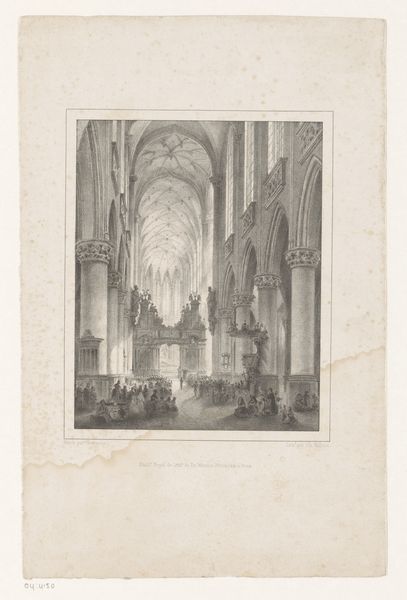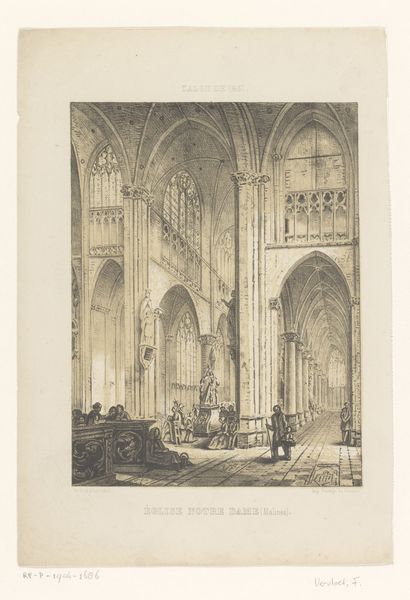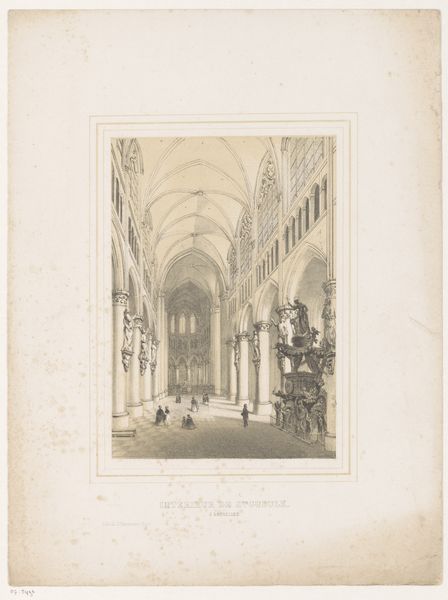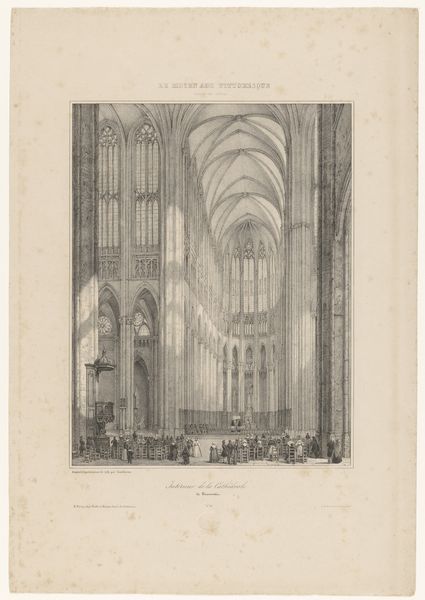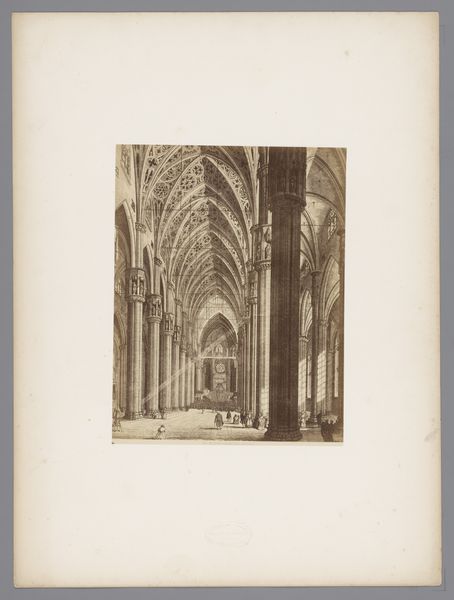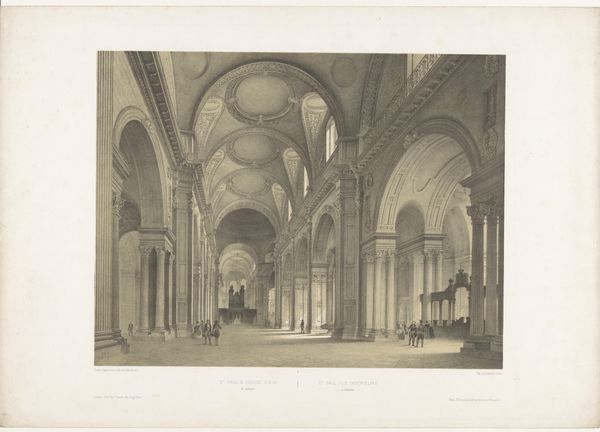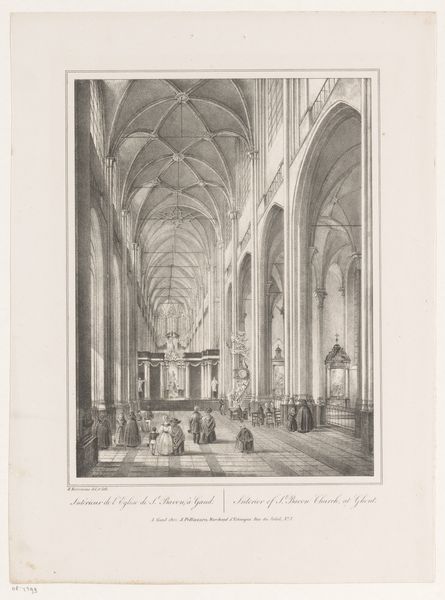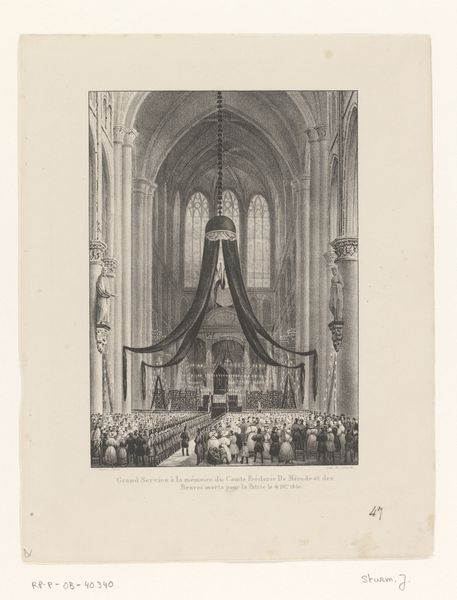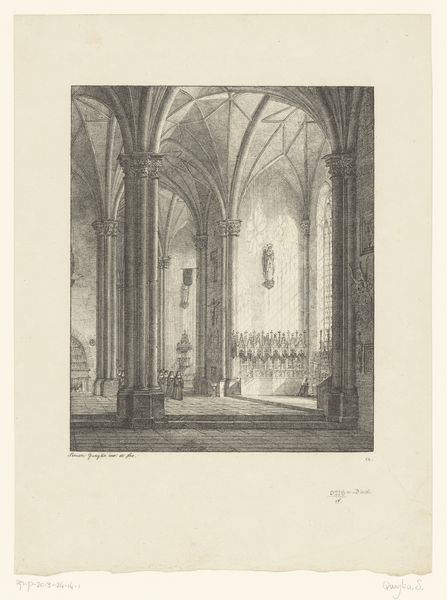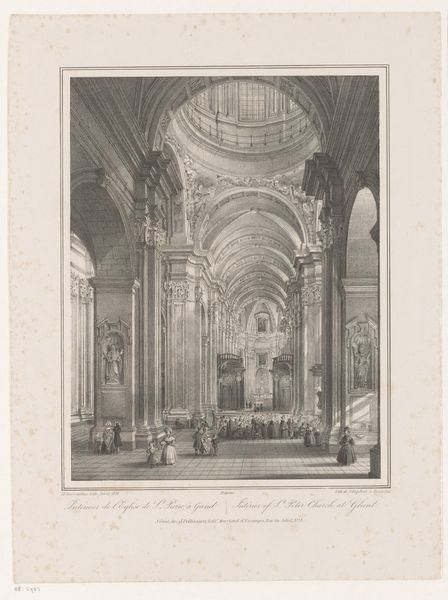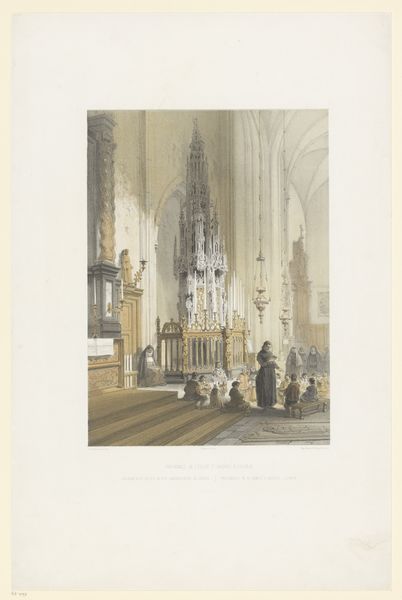
print, engraving, architecture
#
neoclacissism
# print
#
perspective
#
line
#
engraving
#
architecture
Dimensions: height 203 mm, width 244 mm
Copyright: Rijks Museum: Open Domain
Curator: This engraving, created by Filippo Naymiller after 1814, depicts the interior of the Duomo di Milano. The rendering is extraordinary, so full of minute, detailed lines, but somehow the whole thing feels very serene and austere. Editor: It has that architectural monumentality, for sure. But the emotional tenor for me stems from a blend of the perspective lines which really compress the space and also the repeated arch motif throughout that is at once awe-inspiring and just a little claustrophobic, even alienating. Curator: The formal rendering here—the stark lines, the carefully calibrated balance of light and dark created by the hatching—is a really remarkable exercise in perspective, guiding the eye deep into the cathedral's vast interior. Editor: Perspective absolutely dominates; it’s used here not merely as technique, but as a metaphor for the individual's place within the grand scale of faith and institution. The human figures in the foreground become almost swallowed by the architecture, a testament to the Church's power. The Gothic style of Milan’s Duomo of course also speaks to its specific historical lineage and spiritual potency across Italy. Curator: You bring up such great points. The engraving itself becomes a study in contrasts: the immense, almost overwhelming architectural space versus the comparatively tiny figures populating it. Naymiller emphasizes their minuteness. And that is precisely where its evocative power lies: the emotional response generated by this disproportion. Editor: Indeed. These are fascinating depictions, and, if we study the historical context, they emerge not as pure objective renderings but instead become charged symbols of cultural continuity, power dynamics, and perhaps even psychological responses to grand, even intimidating spaces. Curator: Seeing how a fairly limited, specific architectural portrayal—a drawing created with an essentially scientific precision and rigor—becomes an emotional carrier. It is thought-provoking, isn’t it? Editor: Absolutely, thinking of how buildings house and represent not just a city's historical and symbolic memories, but they influence how we collectively feel within and about their spaces is fascinating.
Comments
No comments
Be the first to comment and join the conversation on the ultimate creative platform.
